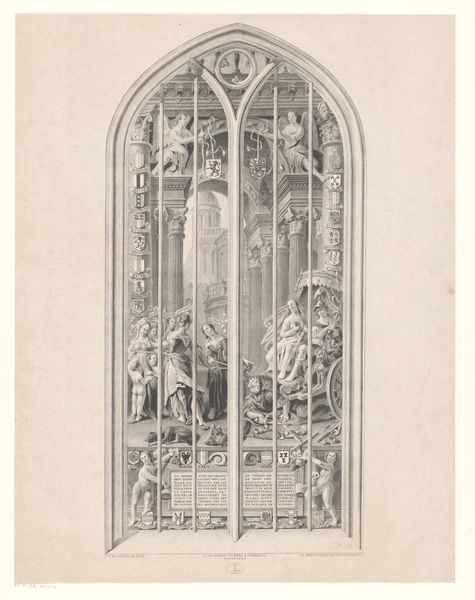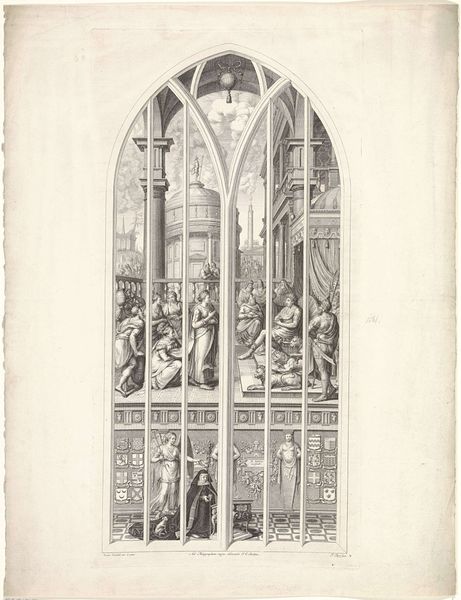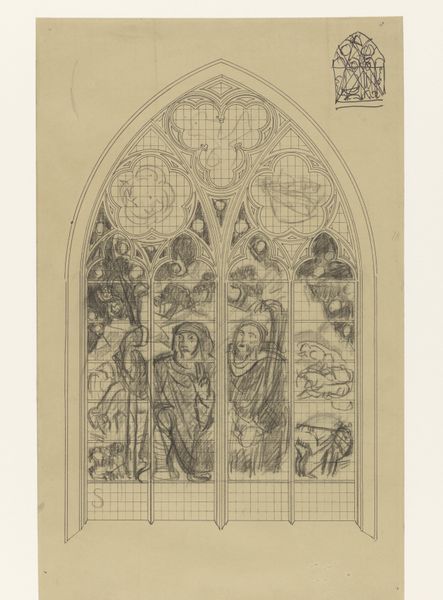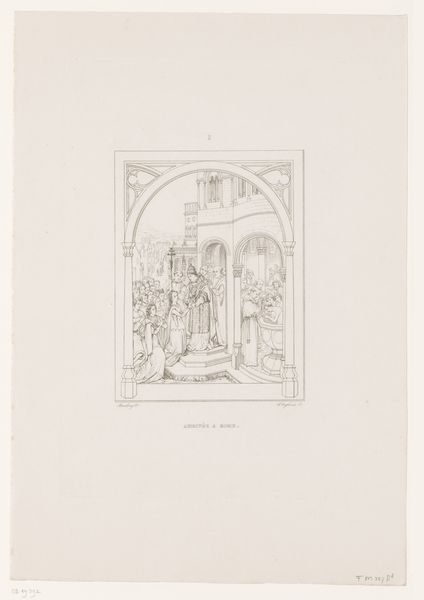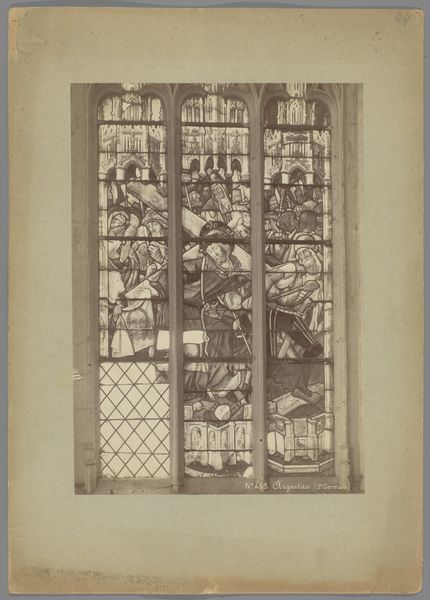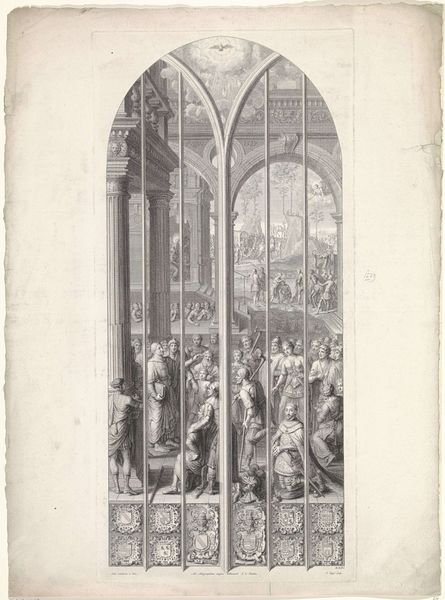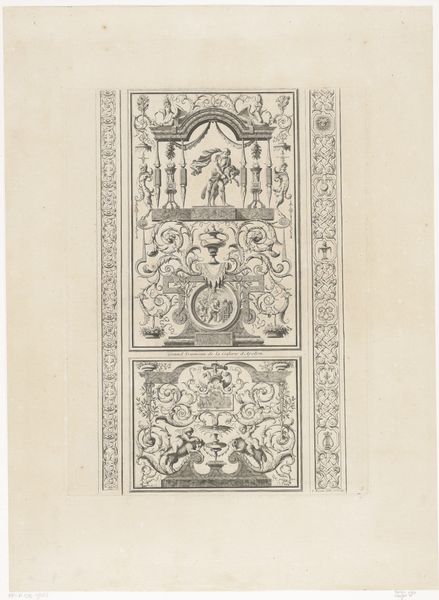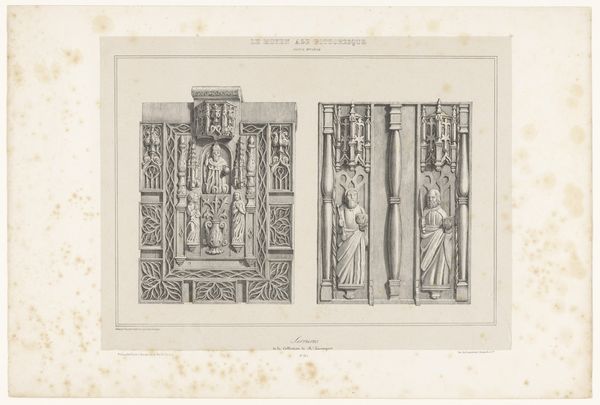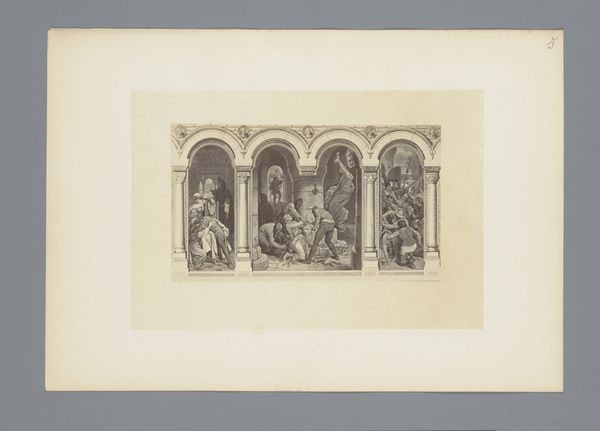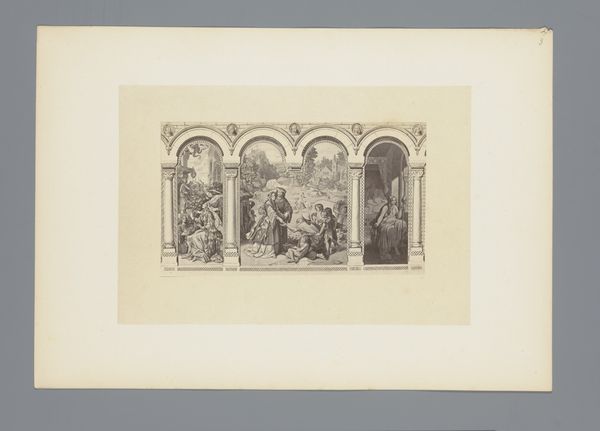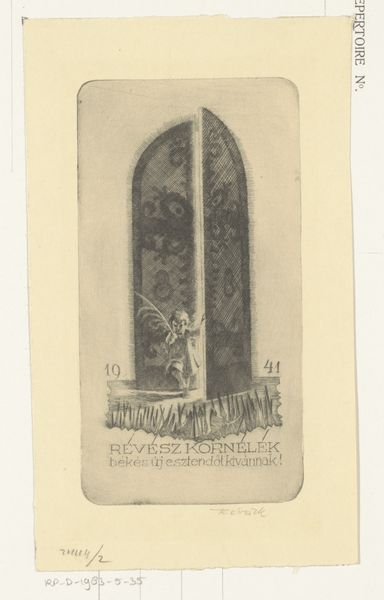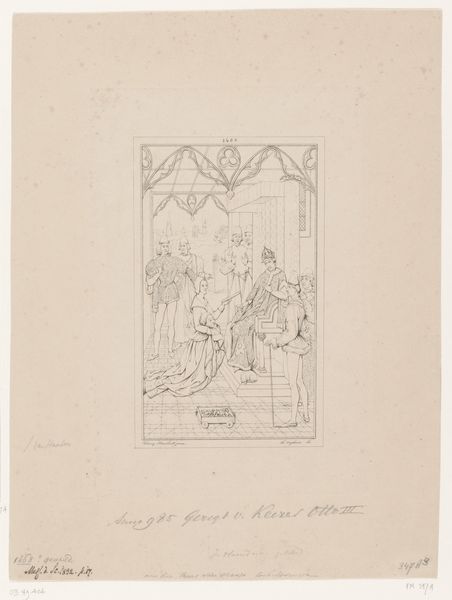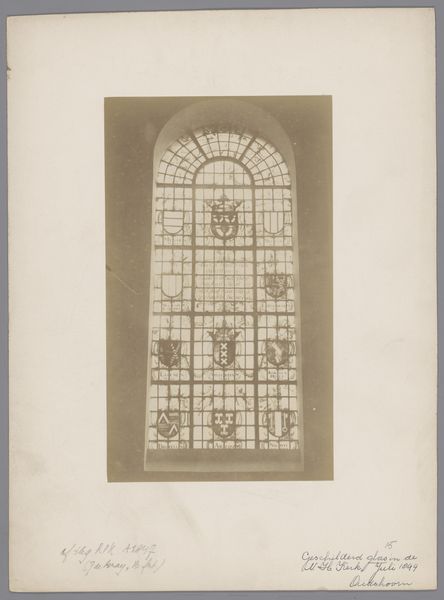
print, engraving
#
medieval
#
pen drawing
#
mechanical pen drawing
# print
#
pen illustration
#
pen sketch
#
old engraving style
#
personal sketchbook
#
ink drawing experimentation
#
pen-ink sketch
#
pen work
#
sketchbook drawing
#
history-painting
#
engraving
Dimensions: height 582 mm, width 448 mm
Copyright: Rijks Museum: Open Domain
Curator: I am immediately drawn to the graphic nature of this work. The strong lines and contrasts give it such a compelling visual presence. Editor: We are looking at “Baptism of Christ in the Jordan with Donor Portrait,” an 1844 engraving by Jan Willem van Borselen, presently held in the Rijksmuseum. Curator: An engraving, of course! It makes perfect sense given the graphic intensity and precision of line. It almost has the appearance of stained glass, even in monochrome. Editor: The composition itself is highly referential, resembling a church window with scenes that, indeed, evoke the medieval. There's such clear hierarchy too, in terms of positioning and scale; clearly there is attention being paid to religious themes as they connect with the elite and patrons who commissioned them. Curator: That hierarchy interests me. It reinforces established power dynamics within religious institutions but also makes them accessible. How does the process of engraving, a replicable form, democratize this image? Was this available beyond the elite circles typically associated with such grand religious imagery? Editor: It brings the symbolism down, yes, and to the masses. Consider, also, the labor: a skilled engraver spending hours translating artistic ideas into a physical plate, capable of producing multiple copies. The means of production inform how we interpret the image itself. It speaks to the burgeoning industrial revolution and its impact on art production. Curator: And further, consider the role of the patron or donor. What kind of status is claimed in a visual juxtaposition that positions them within a sacred narrative? It speaks to ideas of class, access, and how one negotiates their own morality. Editor: Right. It speaks to consumption too – the consumption of art, religion, and social status intertwined. An interesting tension between the divine and the earthly expressed materially. Curator: It is definitely a point of intersection—revealing complex webs of faith, power, labor, and how one views themself. Editor: Indeed. Seeing it through that lens helps us see how artistic choices mirror the social forces at play during its creation. A worthwhile reflection.
Comments
No comments
Be the first to comment and join the conversation on the ultimate creative platform.
